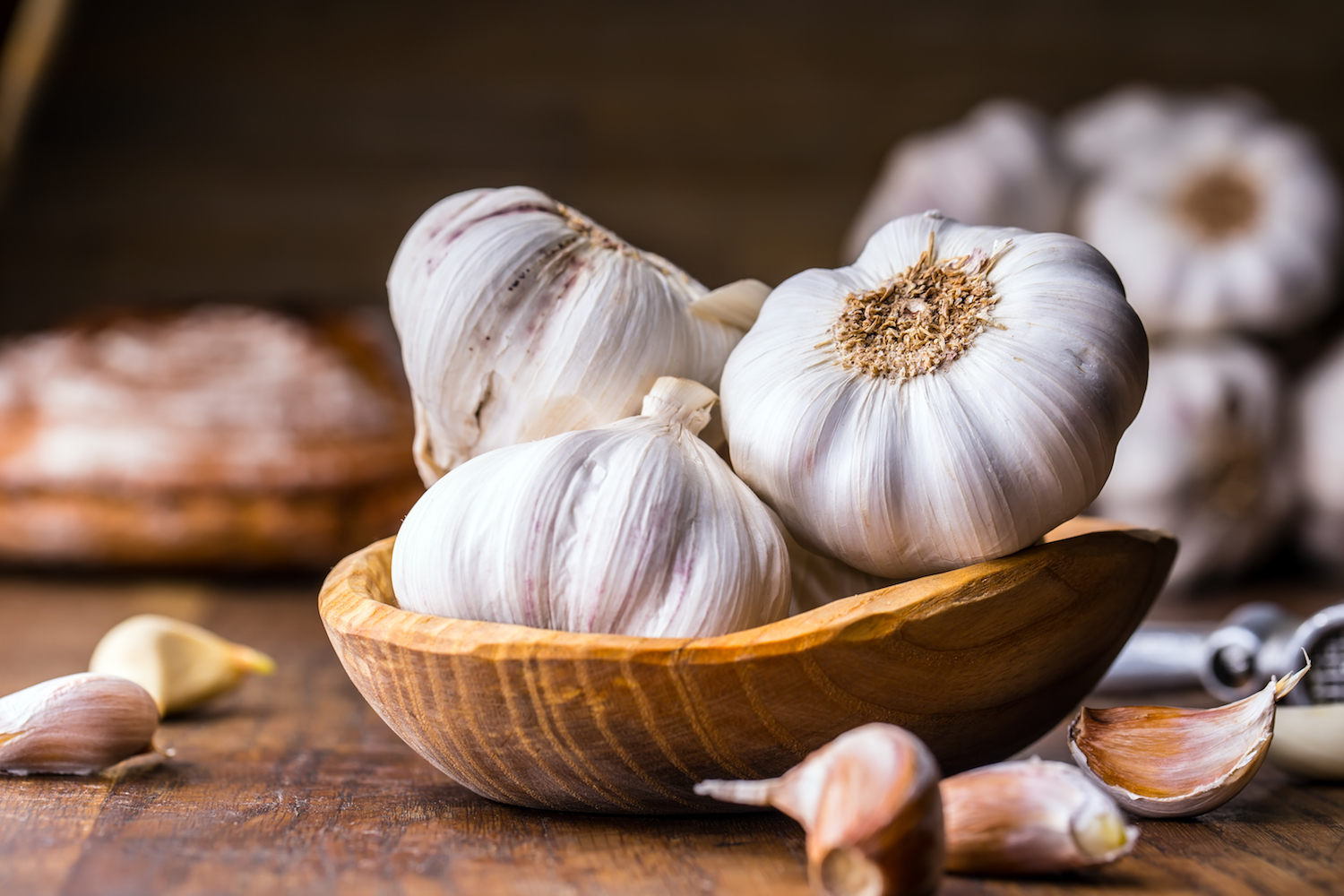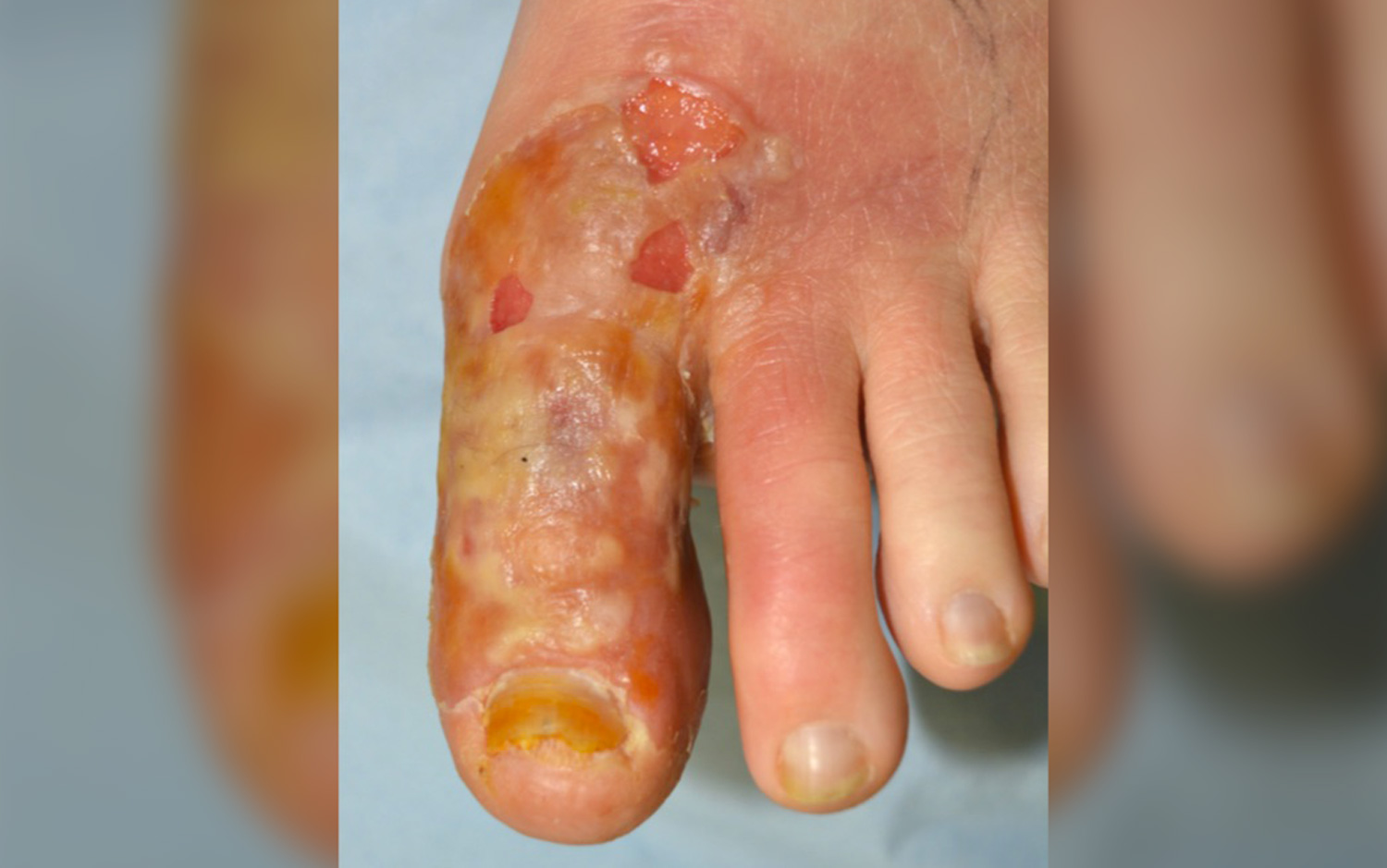Woman Tried to Treat Athlete’s Foot with Raw Garlic. It Burned Through Her Toe.
A woman in England learned the hard way that it's not safe to treat a foot fungus infection by covering it with slices of raw garlic, according to a new report of the woman's case.

A woman in England learned the hard way that it's not safe to treat a foot fungus infection by covering it with slices of raw garlic, according to a new report of the woman's case.
Instead of treating her athlete's foot, the garlic severely burned and blistered the woman's skin, ultimately landing her in a doctor's office, the case report said. (Athlete's foot is a skin infection caused by fungus.)
It's not uncommon for people to turn to home remedies for medical treatment. Given that people have used garlic (Allium sativum) as a health treatment for thousands of years, it's no wonder the 45-year-old woman decided to use raw garlic to try treating her fungal infection, which was affecting the nail on her left big toe and the skin around it, said case report senior author Dr. Kai Wong, a plastic surgeon at Oxford University Hospitals National Health Service Foundation Trust. [25 Medical Myths That Just Won't Go Away]
So, the woman went ahead and sliced up raw garlic. She then applied the slices to her toe for up to 4 hours a day over the course of four weeks.
It didn't work. When she finally went to the doctor's office, she still had the fungal infection, as well as red and painfully blistered skin on her foot, said Wong, who treated the woman. Luckily, the woman made a full recovery (at least from the chemical burn). The doctors rinsed the woman's burned foot with water and then dressed it with bandages. Her skin healed after two weeks.

Garlic burns
It appears that the woman's painful symptoms were caused by the garlic's sulfur-containing compounds, including a compound called diallyl disulfide, Wong told Live Science.
"Basically, the strongest agent [in garlic] is the diallyl disulfide chemical," said Dr. Lisa Maier, a clinical associate professor of dermatology at the University of Washington School of Medicine who was not involved with the case report. "That can do two things. It can either irritate the skin, causing a garlic burn. It can also cause an allergic contact dermatitis, which is more of a true allergy [that people develop], and then you can get more of a rash or an eczema."
Sign up for the Live Science daily newsletter now
Get the world’s most fascinating discoveries delivered straight to your inbox.
In fact, cooks and people who work with food have reported getting garlic burns after handling the raw bulb. The severity of the burn depends on the amount of time spent handling garlic, the freshness and amount of the garlic and whether that person has a pre-existing skin condition or skin sensitivity, the case report said.
While treating the woman, her doctors advised her to use the standard treatment for her fungal infection, Wong said.
In general, nonprescription ointments with antifungals, such as terbinafine and clotrimazole, can treat athlete's foot, so long as the nail isn't infected too, Maier told Live Science. But if the nail is involved, "the most effective way to treat those [infections] are with oral antifungals, and that would need to be prescribed by a physician."
There are studies indicating that a garlic-derived compound known as ajoene can treat athlete's foot (but not nail fungus). A 1996 study in the journal Mycoses and a 2000 study in the Journal of the American Academy of Dermatology showed that ajoene had some success in treating foot fungus. But both of these studies were small (just 34 and 47 people, respectively), and more work is needed to test the compound's effectiveness, Wong said.
The case report was published online July 3 in the journal BMJ Case Reports.
Original article on Live Science.

Laura is the archaeology and Life's Little Mysteries editor at Live Science. She also reports on general science, including paleontology. Her work has appeared in The New York Times, Scholastic, Popular Science and Spectrum, a site on autism research. She has won multiple awards from the Society of Professional Journalists and the Washington Newspaper Publishers Association for her reporting at a weekly newspaper near Seattle. Laura holds a bachelor's degree in English literature and psychology from Washington University in St. Louis and a master's degree in science writing from NYU.










